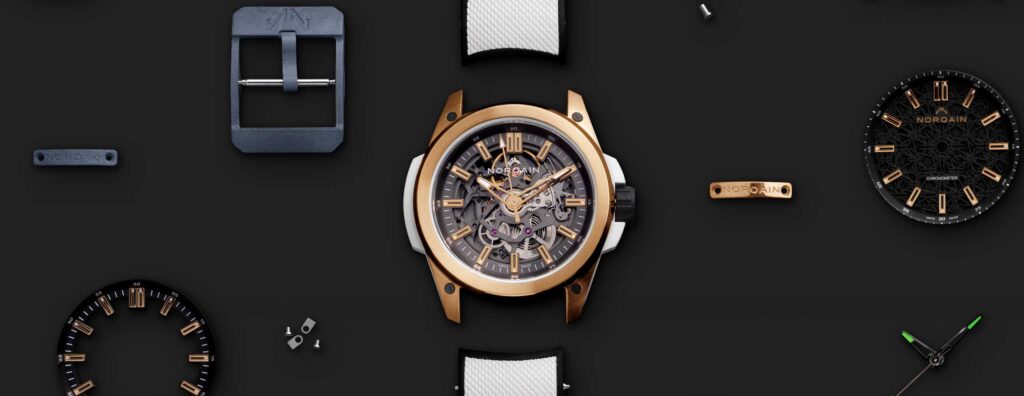As the Piaget Polo makes a comeback in all its golden gadrooned glory, we look at how its movement has evolved from the original 7P quartz to the self-winding ultra-thin caliber 1200P today.
Although the ‘70s is often recalled as the period when Swiss watchmaking had a near-death experience due to the rise of low-cost quartz watches, it was also one of the most fascinating eras in watch design. As rates of production rocketed on the other side of the world, the industry responded by introducing several models that redefined watches as stylish accessories. The first watch that ignited this shift was the
Royal Oak of 1972, followed by the
Nautilus four years later. Other notable entries included the lavish all-gold
Vacheron 222 in 1977 and the first
Cartier Santos with an integrated bracelet in 1978. However, as the ‘80s got underway, there was a watch that marked an entirely new expression that arguably represented the ultimate evolution of the genre – the Piaget Polo.
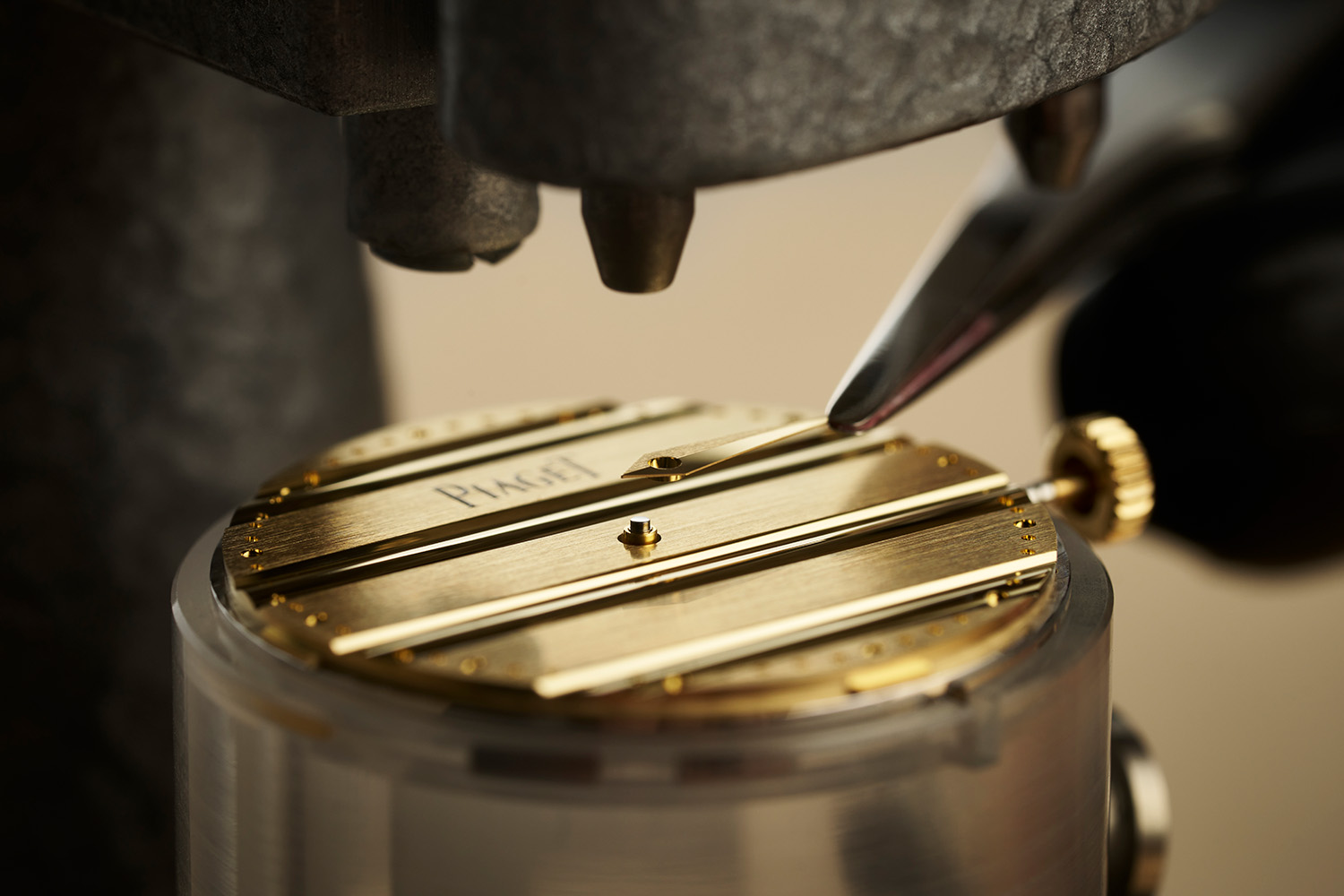
Here was a watch that was an outright manifestation of extravagance. While the Vacheron 222 featured a brass dial, the dial of the Polo, along with its case and bracelet were made out of 18k gold, melded into one seamless, unbroken design. Yves Piaget, the fourth descendant of the family firm, had designed the watch to meet the demands of American high society for a sports watch. By the turn of the decade, Piaget was deeply associated with the world of Polo, a seemingly perfect blend of luxury and sport that served as the namesake and inspiration for the new watch.

Piaget Polo collection circa 1982
The Piaget Polo emerged as a jewelry sports watch with a remarkably sophisticated design that bore witness to Piaget’s goldsmithing expertise. Its distinction lay in the flawless harmony achieved not only between the case and bracelet but also in the melding of the dial and bezel, where the polished gadroons seamlessly flowed from the dial to the bezel. This effect was all the more pronounced given the absence of numerals, as the hours were delicately marked by discreet dots. On top of that, for the larger, time-only models, there was no visible crown; instead the crown was tucked away on the case back. It was available in men’s and women’s sizes and in round or square cases. While the Polo is primarily celebrated for its design and bracelet making art, its movement demonstrates an intriguing development.
Over time, the model has been adapted to resonate with the prevailing trends of the times, experiencing a revival in 2001, which coincided with a decade that not only witnessed a trend toward larger watches but also proved exceptionally fecund for mechanical innovation, resulting in watches such as the Polo Tourbillon Relatif. The next revival came in 2016 with the Polo S just as steel sports watches became in vogue. However, this article will focus on the full gold original and the
modern reissue.
The Ultra-Thin Quartz Calibre In 1962, more than a decade before the Polo, Piaget became part of the consortium of 21 Swiss manufacturers, collectively known as the Centre Electronique Horloger (CEH), that funded the research and development of the first Swiss quartz watch movement. This resulted in the Beta 21 that was brought to market in 1969. It was a large rectangular movement measuring 30.9 by 26.5mm, with a thickness of 6.2 mm—more than three times thicker than Piaget’s mechanical hand-wound 9P caliber. Given Piaget’s preference for slender watchmaking, the Beta 21 was deemed unsuitable. However, as part of the CEH agreement, Piaget briefly utilized the Beta 21 in the rectangular Piaget ref. 14101 model (before the Polo, watch models had no name).
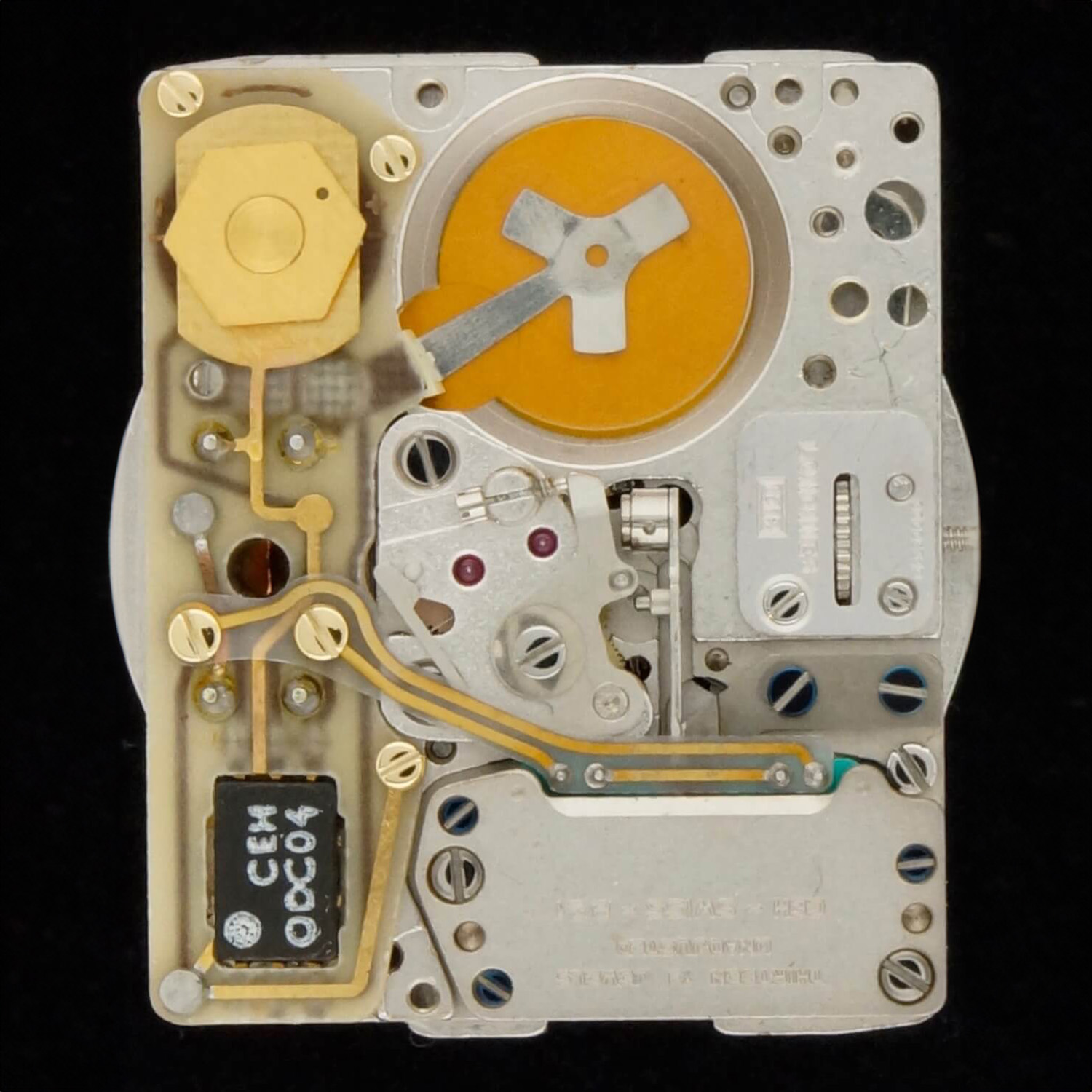
Figure 1. Beta 21
Then, in 1976, Piaget developed its own quartz caliber 7P, which was the world’s flattest quartz movement at the time with a height of just 3.1mm. Its tiny circular shape meant that it could power both round and square watches. The first Polo watches, the men’s 34mm ref. 7661, the midsize 30mm ref. 791, the women’s 27mm ref. 761 as well as the men’s 25mm square version ref. 7131 were all equipped with the 7P but just a year later, it would be succeeded by the calibre 8P, with a height of a mere 1.95mm. The component apart from the battery that takes up considerable space and height in a quartz movement is the stepping motor, which converts electrical pulses generated by the quartz crystal into precise, incremental mechanical movements, driving the hands of the watch. Hence, it had to be modified in the 8P to reduce the overall thickness of the movement.
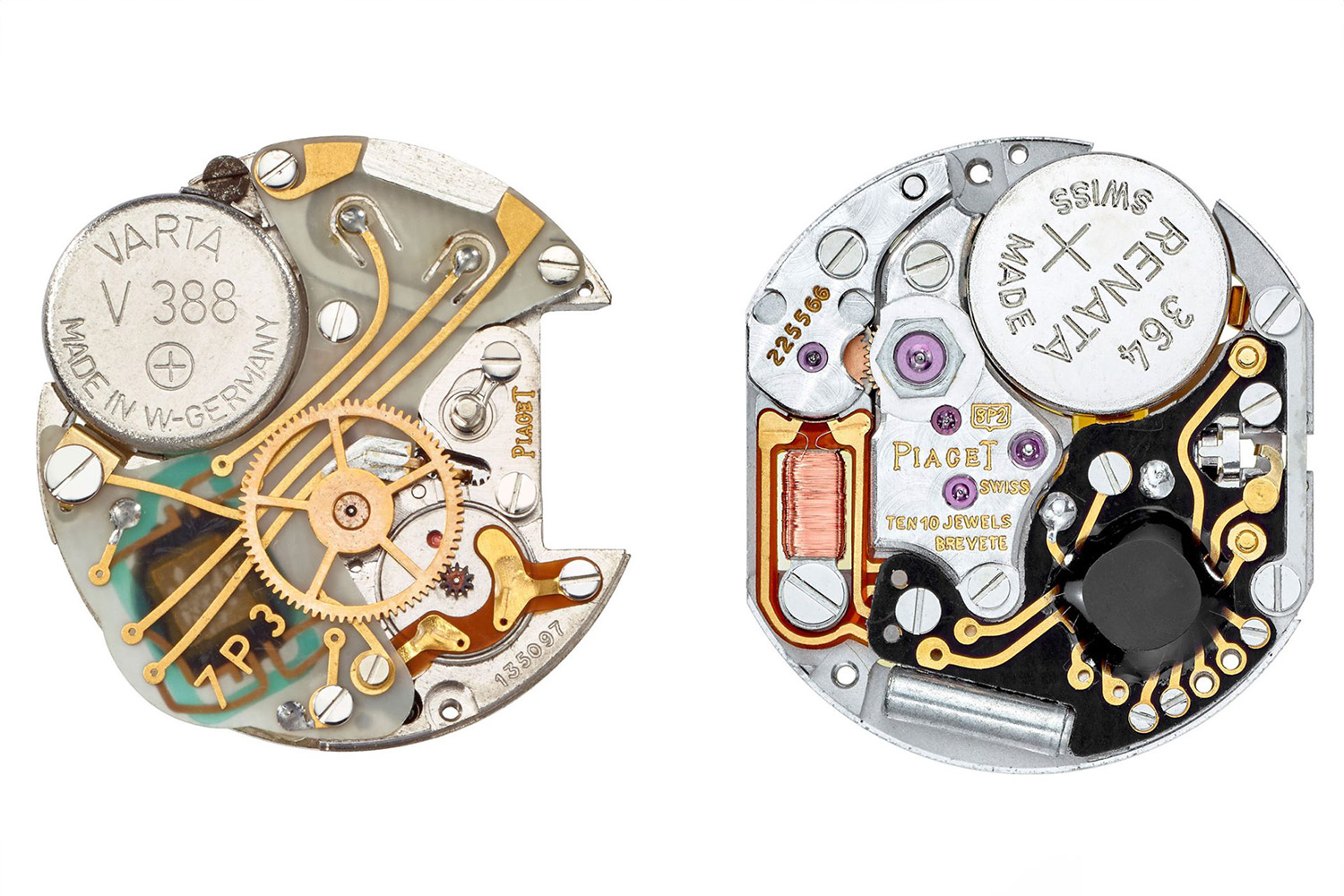
The 7P (left) and the 8P (right) (Source: Swisswatches Magazine)
Following the debut of the initial time-only Polos, Piaget expanded its collection with the introduction of the Polo Date 32mm ref. 15561 and 30mm ref. 15791, along with the Polo Day-Date 32mm ref. 15562. These watches continued to be powered by quartz movements.
The Little-known Ultra-Thin Automatic However, a small number of Polo models in the original run were powered by mechanical automatic movements, easily identifiable by the inclusion of the term “automatic” on their dials.
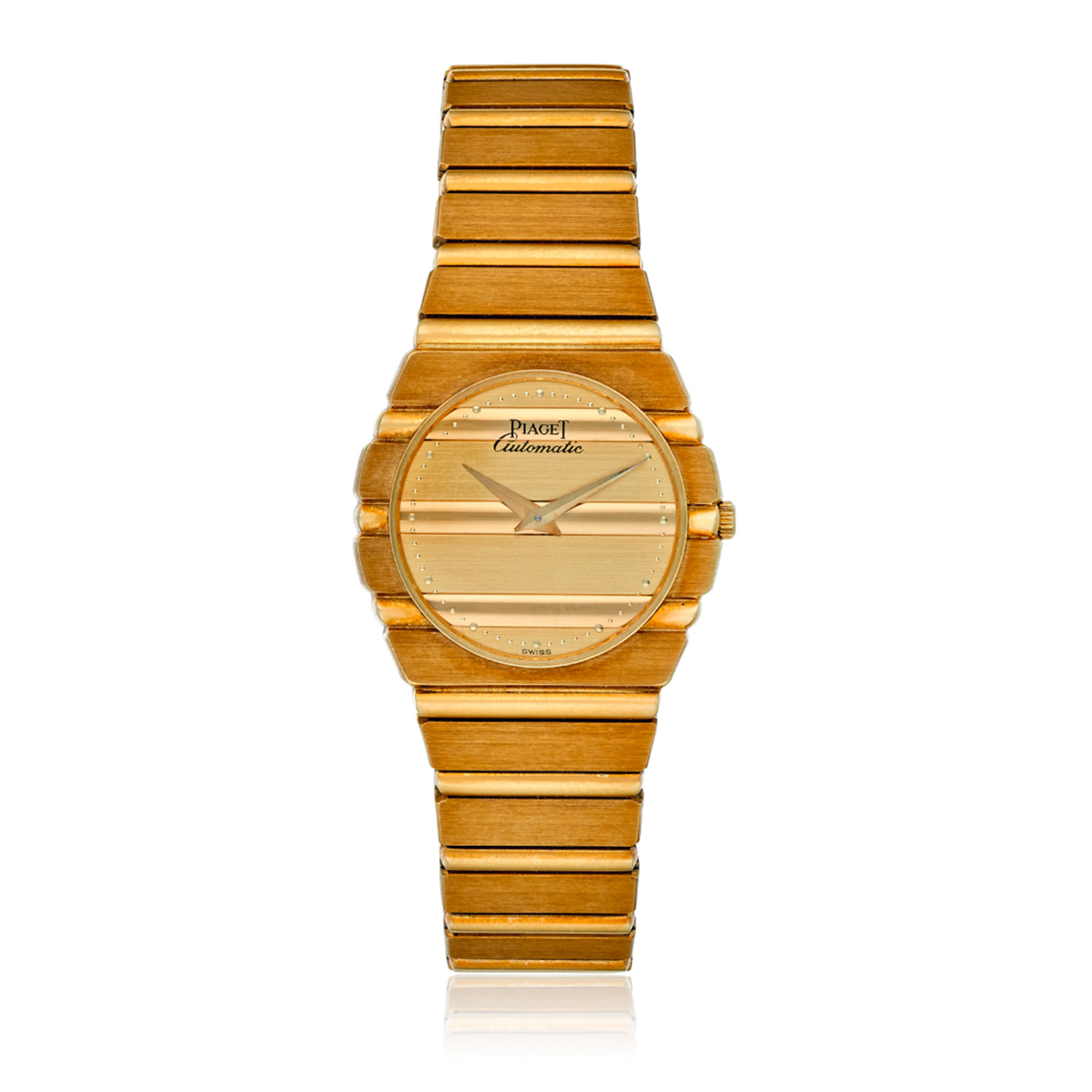
An automatic Polo 27mm Ref. 561 from the '80s. (Source: Christie's)
Interestingly, rather than using its own legendary micro-rotor calibre 12P invented two decades earlier, Piaget utilized the caliber 25P for the 27mm ref. 561 above. It is uncertain if all automatic models used the same movement. The caliber 25P was derived from the little-known Jean Lassale self-winding calibre 2000, which at a mere 2.08mm high, continues to hold the title of the world’s thinnest full-rotor automatic movement to this day.
Apart from Piaget, Jean Lassale was one of the key players in the realm of ultra-thin watchmaking during the ‘70s. The Lassale Calibre 2000, along with its hand-wound counterpart, the Calibre 1200, measuring an insane 1.2mm in height, were introduced in 1976. Unfortunately, these technical breakthroughs unfolded during the ascent of quartz technology; the company eventually went under and was acquired by Seiko in 1979. The patents, on the other hand, went to Nouvelle Lemania in 1982 who continued to produce the calibers 1200 and 2000, initially exclusively for Piaget and later for several other brands, including Vacheron Constantin and Cartier, as the Lemania calibre 1210 and 2010 respectively.
Piaget likely chose the Lassale calibre 2000 over the 12P for the Polo due to its notably smaller dimensions, measuring 20.4mm wide compared to the 28.1mm of the 12P, allowing it to fit into a wide range of smaller cases. The Lassale calibre represented several intriguing and unusual solutions that arguably paved the way for more substantial developments in the field of ultra-thin watchmaking, such as the use of the caseback as the base plate.
To suppress the height of the movement, the wheel train and keyless works are spread out entirely on the horizontal plane in the Lassale caliber. The intermediate winding wheels and crown wheel, traditionally arranged on separate levels on the front and back, are situated on the same plane on the dial side.

A look at the number of ball bearing races in the wheel train

Dial side of the ultra-thin Lassle caliber (Source: eBay)
The mainspring barrel drives the centre pinion and motion works directly while the going train is laid out in a crescent shape at the edge of the movement, distributed across both the front and back of the base plate. Most notably, the majority of wheels including the crown wheel are inset into the base plate and supported only on one side only. There are no bridges except for balance wheel. Instead, each wheel runs on ball bearings with the races installed in the base plate. The mainspring barrel, for instance, is supported on three ball bearings around its periphery.
However, the lack of stability and delicate nature of their construction ultimately made them unreliable and servicing them often meant swapping out the entire movement. Nonetheless, the concept of reducing the fundamental structure of a movement would become a mainstay in wafer-thin watchmaking.
The Modern Piaget Calibre 1200P

The Polo 79 with a 38mm case
Over two decades have elapsed since the original run of the monochromatic gold Polo watches. During this time, Piaget’s expertise in ultra-thin construction has continued to evolve, having set and broken records for the thinnest production watch across various areas of ultra-thin watchmaking, with only a handful of rivals able to best it. Today, the newly unveiled Polo 79 is powered by the Piaget ultra-thin self-winding calibre 1200P, a proven performer that measures just 2.35mm high. This makes the Polo 79 the first all-gold model to be equipped with an in-house ultra-thin automatic movement.
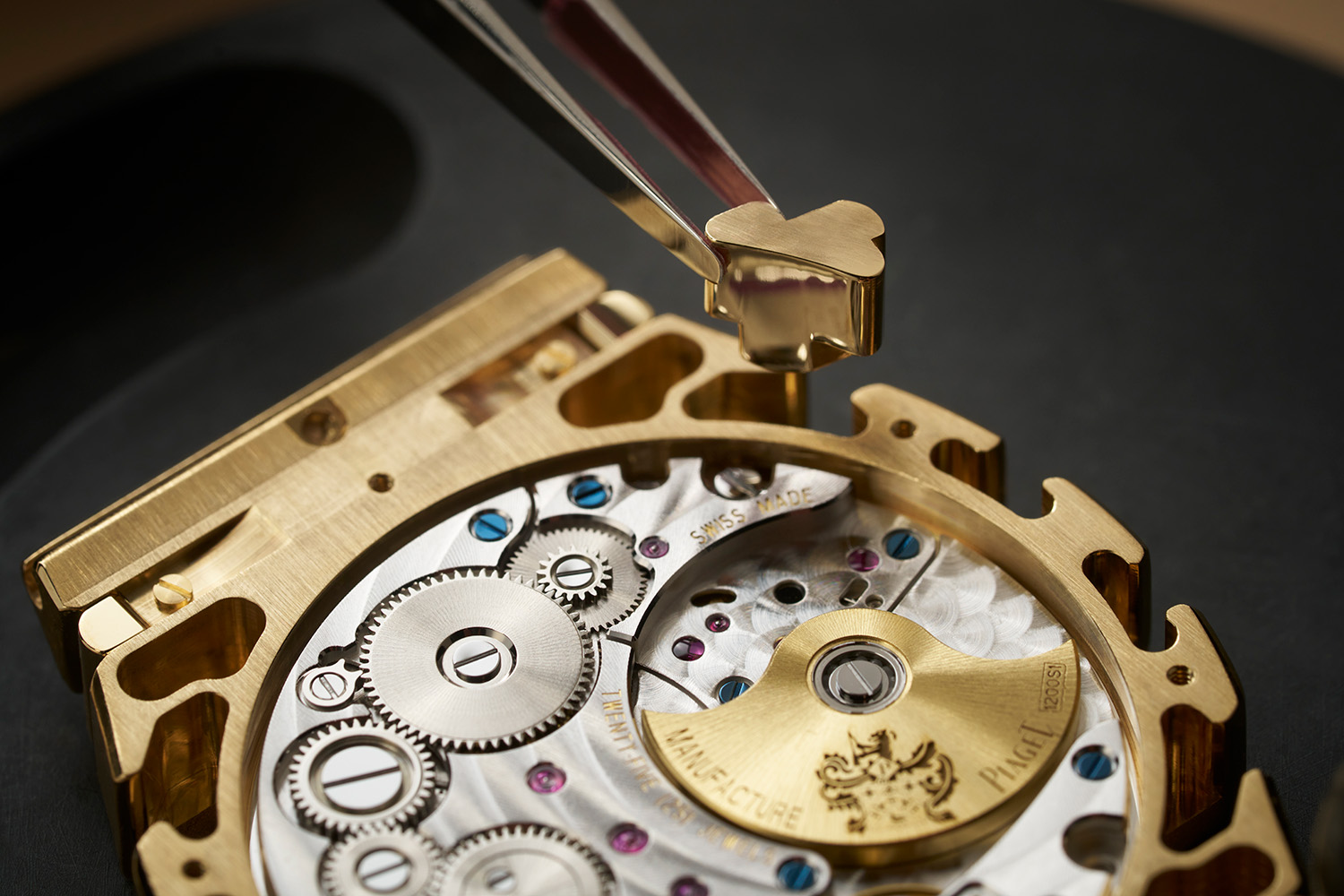
The 2.35mm calibre 1200P
Slimming automatic winding movements is inherently more challenging, as the design must balance structural integrity, winding efficiency while incorporating smaller and leaner parts. The calibre 1200P was the thinnest ultra-thin automatic movement in production when it was launched in 2010. It was cased in the 43mm Altiplano, which had an overall thickness of 5.25 mm, making it the world’s thinnest watch that same year.
The 1200P is an evolution of the landmark 12P from 1960 with improved performance on various fronts, including frequency and power reserve from 2.75Hz to 3Hz and 40 hours to 44 hours respectively. Like the 12P, it incorporates a micro-rotor at nine o’clock. The advantages of a micro-rotor winding system are evident: the winding mechanism is completely recessed into the movement itself, rather than being above the top plate, which more or less doubles its height. But the challenge lies in having to compensate for the reduced diameter by increasing its weight, so that the moment of inertia remains sufficient. In this case, the rotor is made of 24k gold for greater inertia. At the same time, the rotor runs on a ball-bearing system and thus loss of energy due to friction is virtually zero.
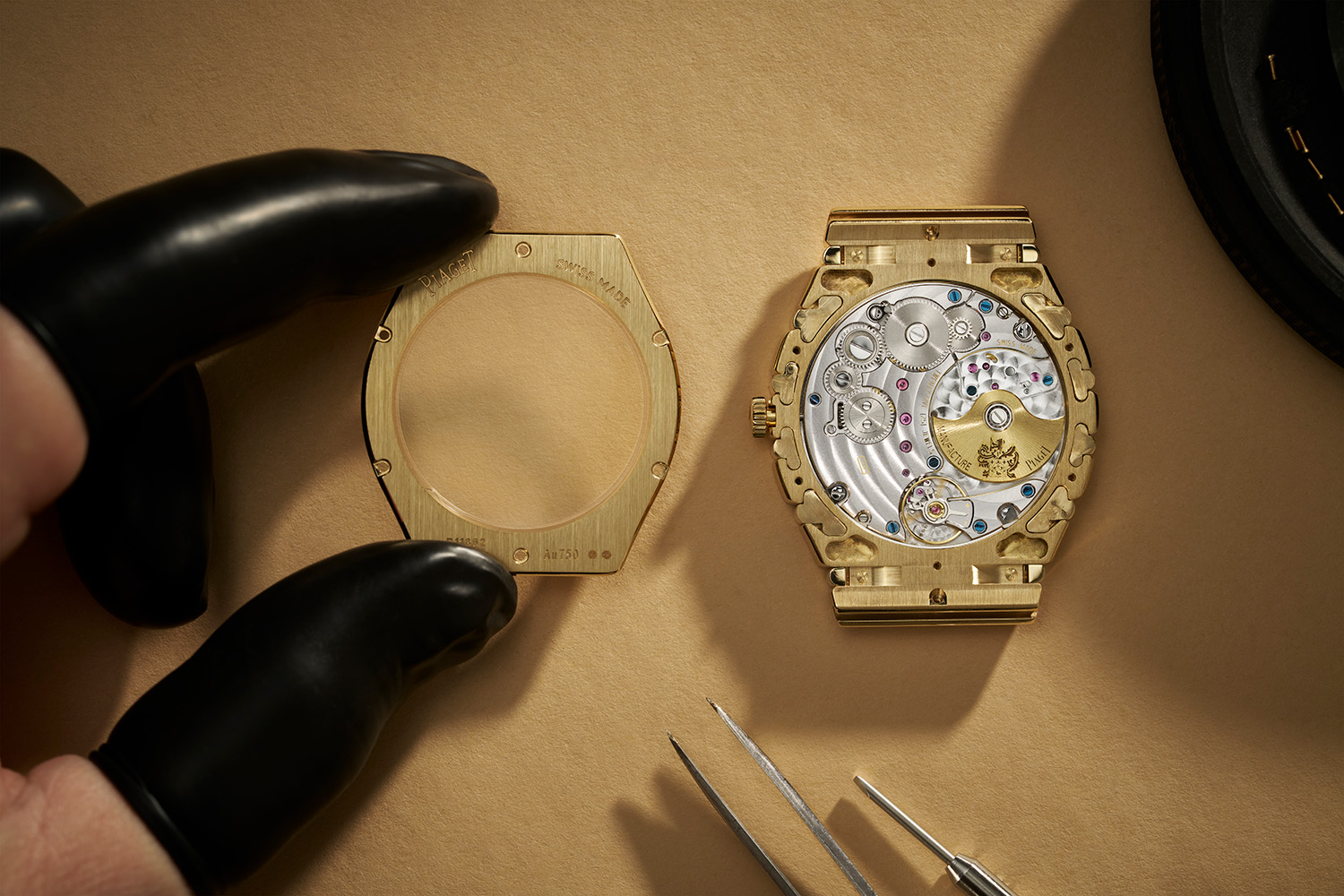
As opposed to the 12P, the 1200P has a hanging barrel, meaning it has no upper bridge and is only supported from beneath. The gear train is laid out vertically next to the offset rotor. Certain wheels were flattened from the traditional 0.2mm to a mere 0.12mm. However, the movement has a classically solid construction, with a large bridge supporting the going the train. In all, the 1200P perhaps represents the practical threshold of ultra-thin watchmaking achievable with traditional materials and construction, all while offering peace of mind.


















